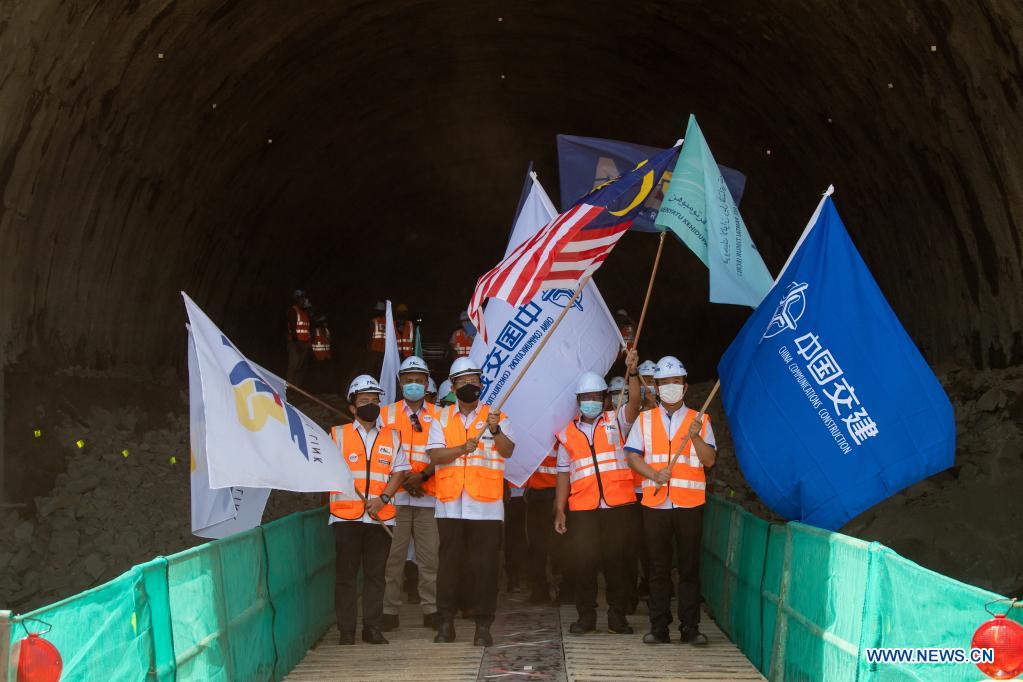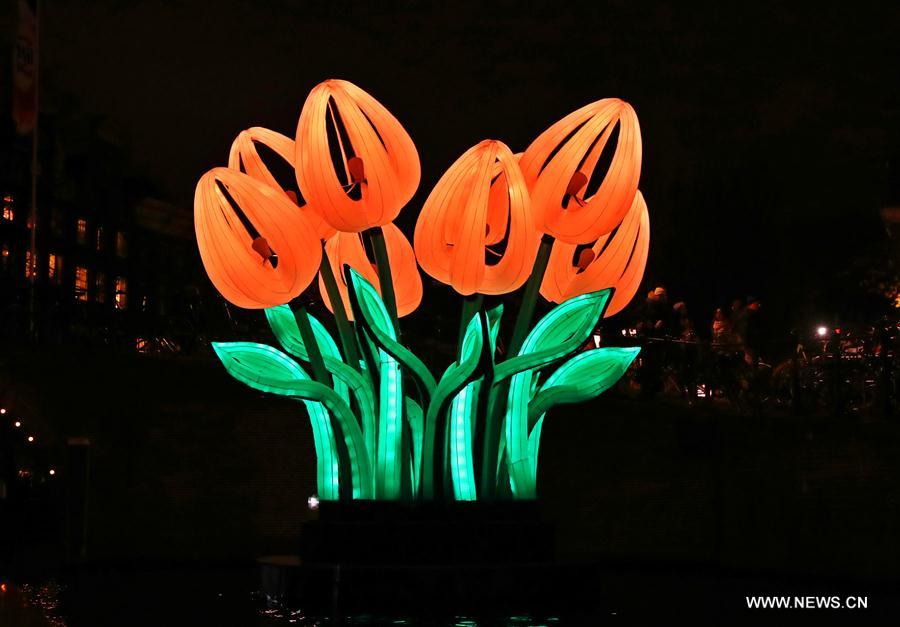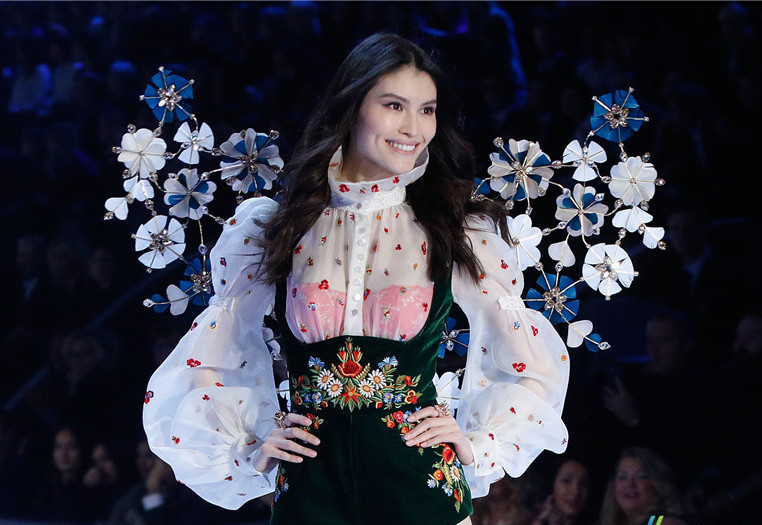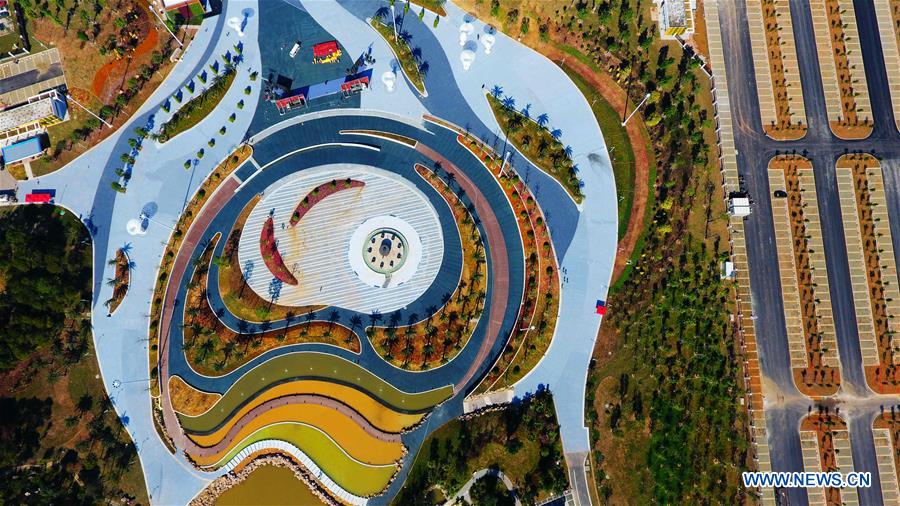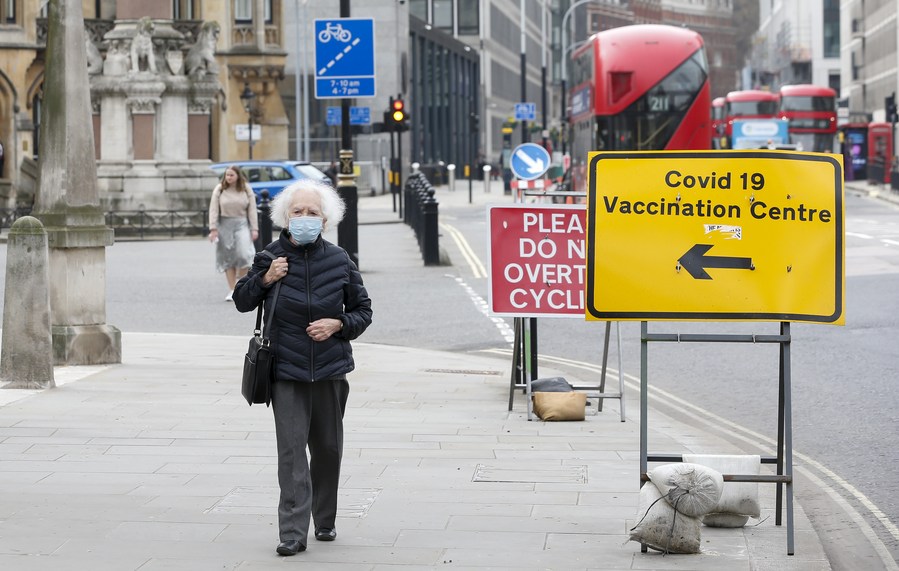
A woman wearing a face mask walks past an NHS (National Health Service) COVID-19 Vaccination Centre in London, Britain, on March 31, 2021. (Xinhua/Han Yan)
- Besides the continent's aging population and the overwhelmed healthcare systems, some experts attributed the bleakness in Europe to frequent policy changes, which have swung between lockdowns and relaxations for several rounds.
- The slow rollout of vaccination may also prolong the pandemic. According to WHO Europe Office, only 10 percent of the region's total population has received at least one vaccine dose and 4 percent has received both, as of April 1.
BRUSSELS, April 9 -- For Danica Angela Marcos, the weirdest yet saddest scenario was to watch her grandfather's funeral live on Zoom, seeing her cousins crying on the screen but not able to give them a hug because of the lockdown.
"It's not like we can do (it) all over again when the pandemic is over ... I cannot re-attend my grandpa's funeral," mumbled the black-hair Londoner in her 20s, rolling eyes to hold back tears, whose grandfather passed away in California, the United States, towards the end of last year.
Many Europeans, like Marcos, have undergone similar human sorrows and pains, as the nightmare of COVID-19, which has shrouded the continent since more than one year ago, is still hovering around.
On Friday, the Copenhagen-based World Health Organization (WHO) Europe Office announced that the European region has recorded more than 1 million COVID-19-related deaths.
FACTORS BEHIND RESURGENCE
Since breaking out in late 2019, COVID-19 has been causing infections and deaths at an accelerated pace across Europe. One after another, governments of different countries were woken up to the danger, announcing partial or full lockdowns, and even night curfews, moves rarely seen since the end of World War II.




